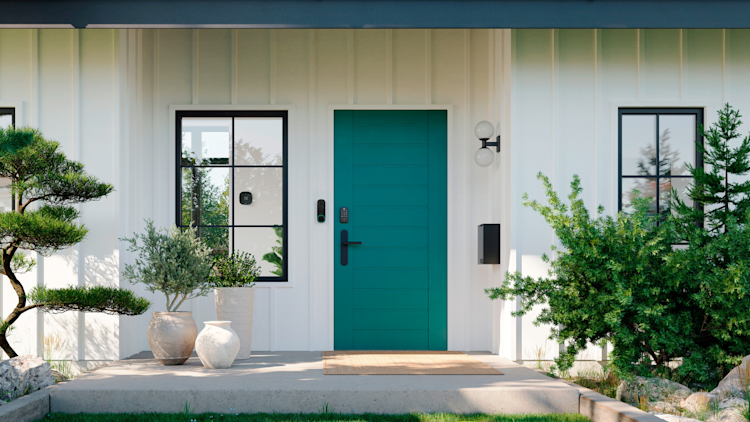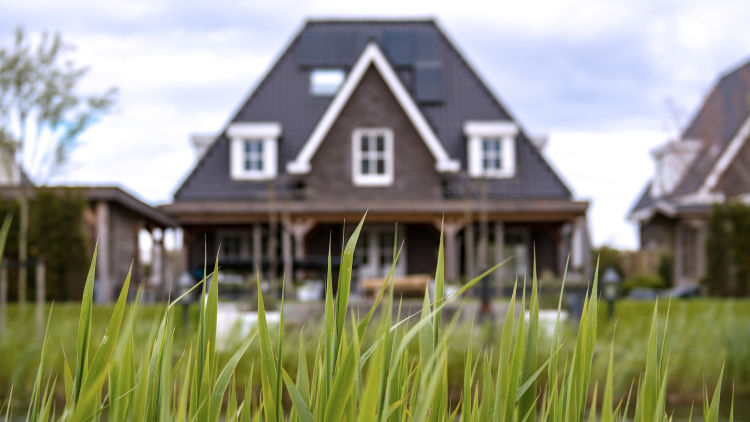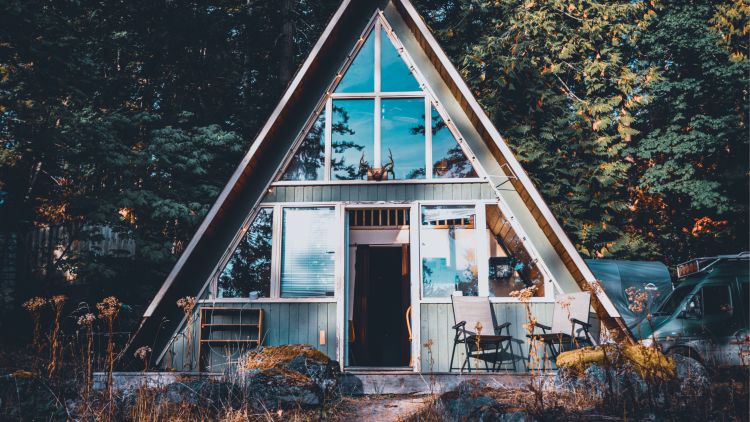How Clayton is Building an Affordable Net-Zero Home
We spoke with Clayton, a national home builder, to find out how recent innovations have finally put the net-zero home within reach.
by ecobee on 11/01/2022 in Home & Design
7 min read
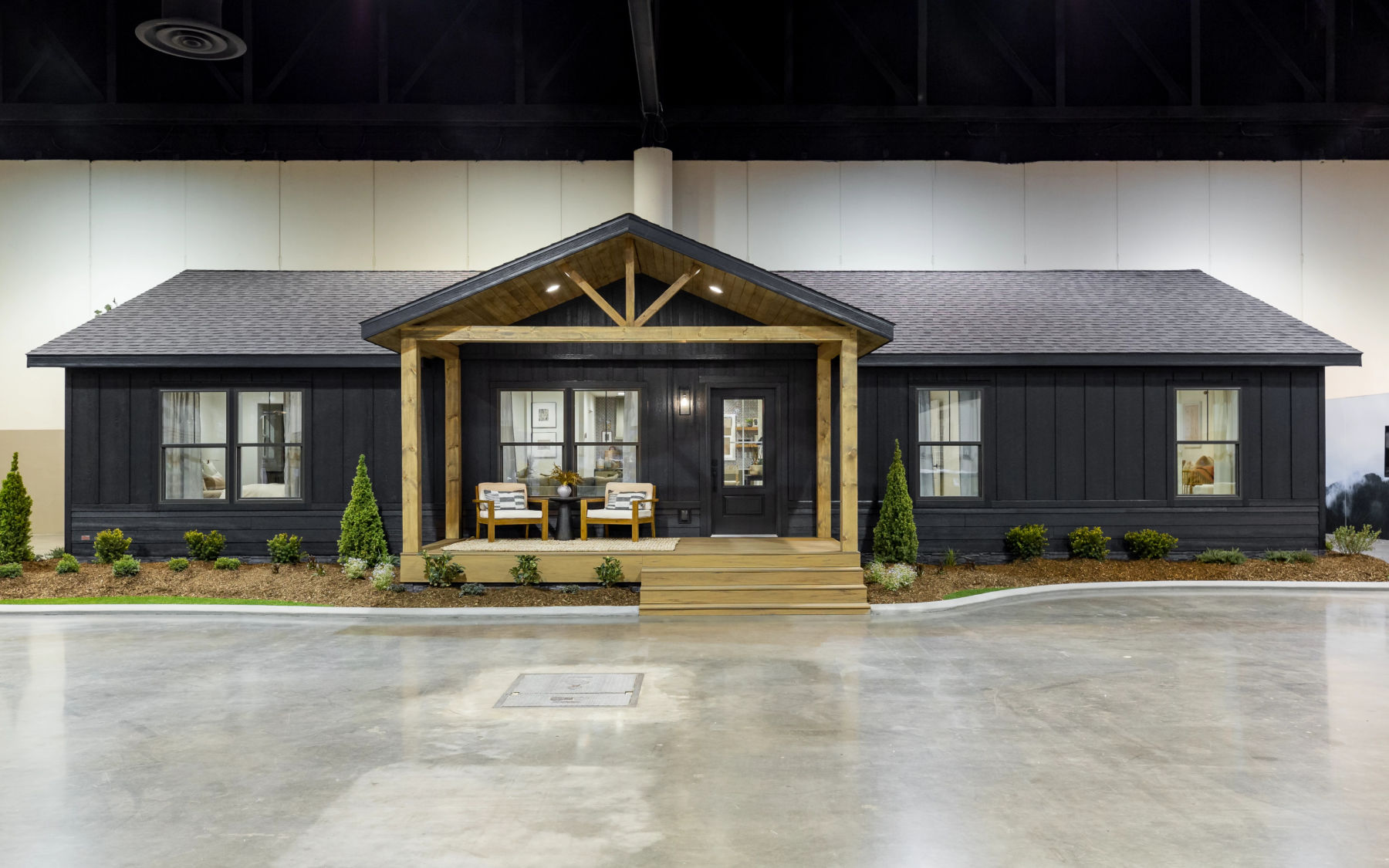
According to the National Association of Home Builders, building a single 2,000-square-foot home at a job site creates over 8,000 pounds of waste. Hundreds of millions of tons of construction waste end up in landfills yearly.
Unlike traditional homes built at the job site, Clayton manufactured and modular homes are built off-site in a climate-controlled facility and transported to the home site for set up. This means the team can closely monitor material usage and reduce waste while ensuring their processes and workspaces are efficient.
The result? During the off-site building process of its brand-new 1,549 square-foot net-zero electricity show home*, Clayton says that just one 64-gallon bin of waste was collected as the home moved down the production line.
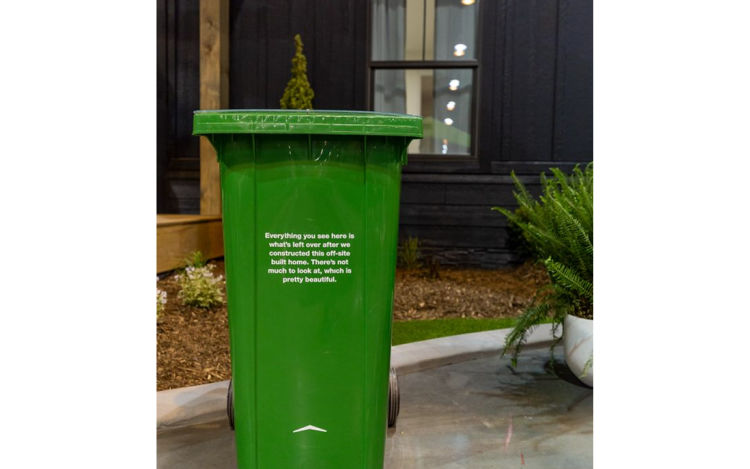
Building a home while producing minimal waste is just one of the impressive aspects of the net-zero electricity home. As its name implies, it also drastically cuts greenhouse gas emissions. And better yet, at a price many people can afford. We spoke with William Jenkins, Clayton’s director of environment and sustainability, to get the inside scoop on the project.
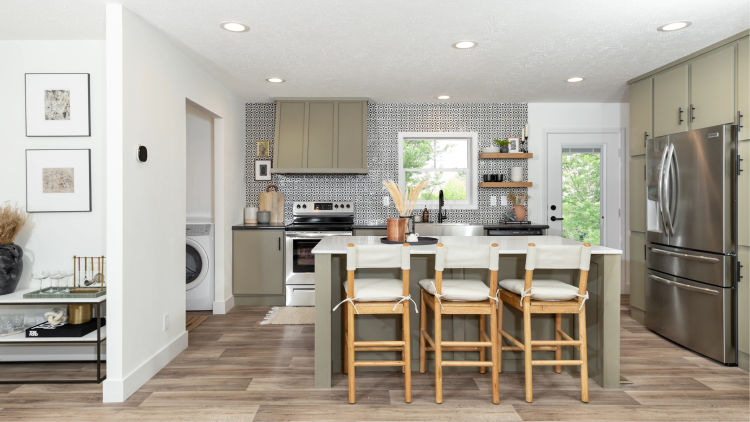
ecobee Citizen: First, what is a net-zero home?
Jenkins: This particular home is a net-zero electricity home. What that means is that it is a highly energy-efficient home with an installed solar system sized to meet the home's annual electricity needs. It was designed so that, over the course of a year, the amount of power the solar system generates matches the home's forecasted electricity needs.
ecobee Citizen: How did the idea for the net-zero home come about?
Jenkins: At Clayton, our bigger purpose is opening doors to a better life, and so much of that involves delivering a sustainable and affordable home. We knew Berkshire Hathaway, Clayton’s parent company, shareholders’ meeting was coming up, and for that, we wanted to demonstrate a home that maximizes energy efficiency while being a good example of the homes we’re building today.
Our design team worked with one of our existing floor plans called the Pulse and paired it with every energy efficiency upgrade they could think of. Then we worked with CertainTeed® to install a solar system to provide as much energy as the home is estimated to use in a year. The result demonstrates our commitment to delivering a home that’s more affordable, not only on the front-end, but throughout its entire lifespan.
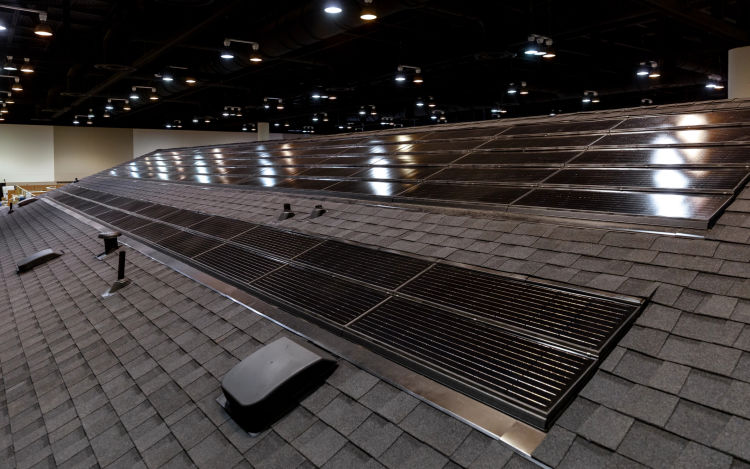
ecobee Citizen: What features make it a net-zero home?
Jenkins: We reached net-zero through all of the energy efficiency upgrades within the house. That means all ENERGY STAR® appliances, all LED lighting, and upgrades to the exterior. The double-pane windows, for instance, have a low emissivity (Low-e) coating that minimizes the heat that can pass through without compromising the amount of visible light transmitted. They are filled with argon, a colorless, non-flammable gas that helps further reduce heat transfer. We've added extra high-R value insulation in the ceiling, walls, and floor. A Carrier® heat pump provides heating and cooling, and an ecobee thermostat controls the heat pump for maximum efficiency. During the day, solar shingles meet most of the home's electricity needs. The house is grid-tied to make up for any daytime shortfalls and to power the home overnight.
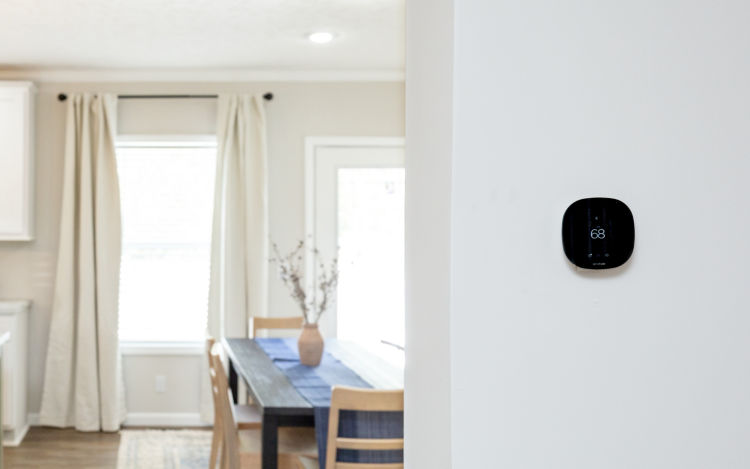
ecobee Citizen: Why did you choose an ecobee thermostat?
Jenkins: An ecobee thermostat comes standard in any Clayton Built® home, and I think it’s a great partnership. We’re two very likeminded organizations in terms of how we see sustainability and energy efficiency intersecting. We place an emphasis on building homes that are not only affordable to buy but to live in. And we do that by building homes that use resources more responsibly. The marriage between a Clayton home and an ecobee thermostat helps us make the most of the energy inputs going into the home, allowing our customers to lower their annual heating and cooling costs by up to 26%** and control their home from anywhere.
ecobee Citizen: We tend to think of things that are good for the environment as being more expensive. How were you able to build a home that’s good for the environment and make it affordable compared to standard homes on the market?
Jenkins: One reason we built this house and showed it at the meeting was to demonstrate that the green premiums of past decades are going away. Depending on location and features, we can build a home today that can potentially zero out your electricity bill over a year and make it affordable to buy.
Our background plays a big role in how we were able to deliver on this promise. We've been innovating and refining our home building process for decades. It’s those efficiency gains on the production side—designing better processes, reducing waste, and increasing speed—that make it possible for us to build homes at an affordable price point.
As we've lowered costs by improving our home building practice, green technologies have become progressively more affordable. Dramatic cost reductions are now making it possible for us to make these energy-efficiency upgrades affordable.
ecobee Citizen: I was very impressed with how little waste was produced during the off-site building process. Can you speak to how Clayton minimizes the environmental impact of home building?
Jenkins: Like energy efficiency, we’ve had a long-term focus on the efficiency of our building process. Much of this started in 2014 when we began pursuing an ISO 14001 certification at all 40 of our home building facilities. Through implementing the ISO 14001 environmental management system, we have significantly improved our waste reduction performance. Applying that framework in a controlled environment where we can build to the exact dimensions and measurements of the floor plan removes a lot of the waste that’s inherent in the traditional site build process.
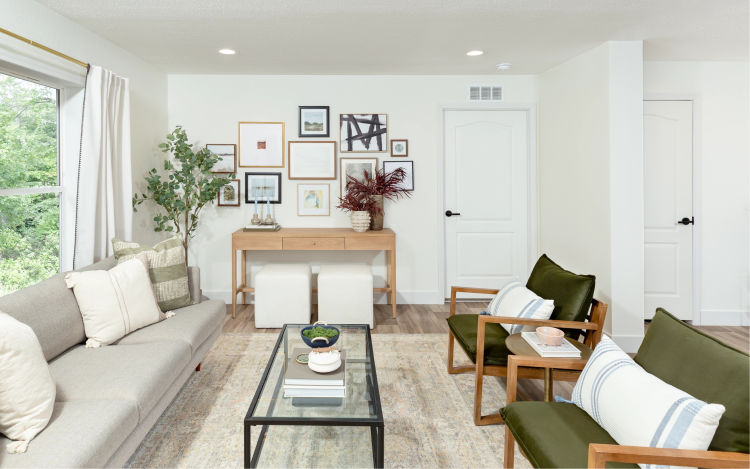
ecobee Citizen: Can the net-zero home be self-powering, or does it need to be connected to the electricity grid?
Jenkins: We had a buyer lined up when we brought it to the meeting. They were interested in keeping this home connected to the grid. There isn’t a battery in-house, but you could always add one after the fact for an off-grid solution.
ecobee Citizen: Did anything about building this home surprise you?
Jenkins: One thing that stood out was how committed the team was to reducing waste and how creative they were in finding innovative solutions. We had team members following every step of the building process, trying to identify ways to reduce waste by using materials more efficiently, and reusing materials where possible. Interestingly, scrap lumber and gypsum were sent to a nearby farm for use in animal bedding.
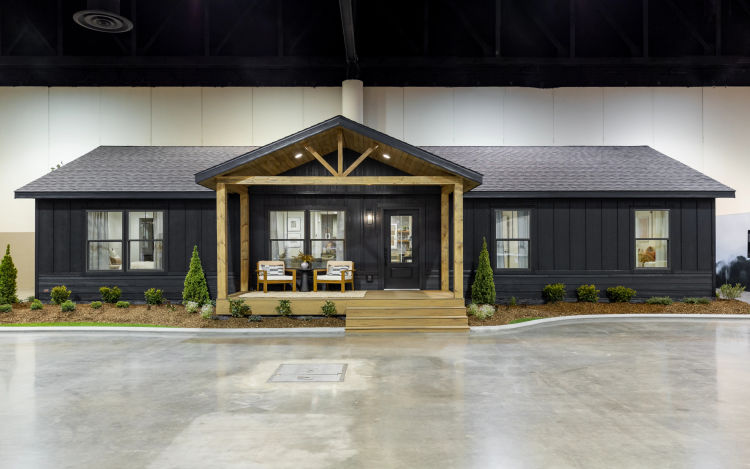
ecobee Citizen: Is the net-zero home as demonstrated available for purchase?
Jenkins: The home is currently available to customers as the Pulse floor plan paired with several energy efficient upgrades. The one thing that we do not currently offer is the installed solar system. Anyone considering solar should account for the location-specific considerations that play a role in sizing the system appropriately. For the net-zero home, we knew in advance where the home would be located and how it would be set.
About Clayton
Clayton has been making prefabricated (manufactured) housing since 1956. As a diverse builder committed to quality and durability, Clayton offers traditional site-built homes and off-site built housing—including modular homes, manufactured homes, CrossMod® homes, tiny homes, college dormitories, military barracks, and apartments. Clayton has long been a partner with ecobee in building the sustainable and affordable houses of the future.
About William Jenkins

As Clayton’s Director of Environment and Sustainability, William Jenkins is focused on creating a better future through responsible building practices. Jenkins has a background in earth science and environmental consulting. His experience as a scientist fostered his passion for sustainability, and continues to drive his efforts in implementing sustainability at Clayton.
* Net-zero electricity is based on electrical energy consumption using NREL® BEopt™ to estimate annual electrical energy consumption and NREL PVWatts Calculator to estimate the annual solar production on homes built with energy-efficient features and assumes that the home is placed in a location that optimizes the solar features.
** Compared to a hold of 72°F/22°C
Did you enjoy this article?
Thanks for letting us know!

